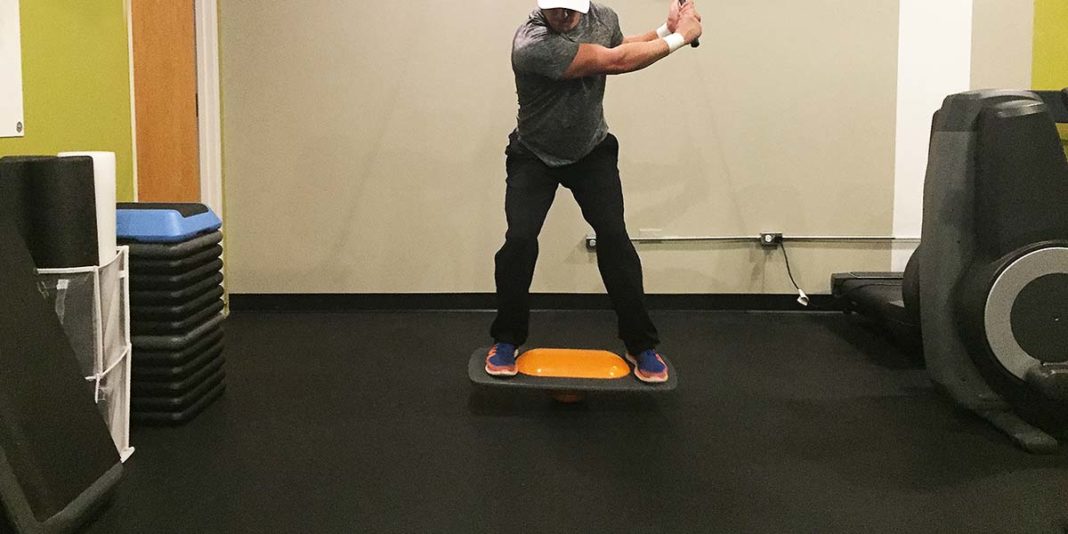GolfTEC’s Andrew Dodson shows how to maintain balance in your golf swing
You’ve heard it a million times— there isn’t one uniform golf swing to fit every player.
Just try juxtaposing Adam Scott and Jim Furyk for a quick visual to close the case. Scott’s swing looks like it was flawlessly engineered in a lab, while Furyk’s is akin to an “octopus falling out of a tree,” to quote David Feherty. Each player has his own, distinct golf swing — one picturesque and one … let’s call it, effective. But both are in the top 20 in the Official World Golf Ranking headed into this week’s Open Championship.
Although there are many different ways to swing, there are a few consistent fundamentals every elite golfer must possess — namely balance and “connection” to the ground. This helps to create the correct downswing sequence seen with top players (i.e. an inside-to-out swing path, instead of the “over-the-top” move), and is a key ingredient to create maximum clubhead speed and consistency.
The absence of balance
One of the most common flaws I see as a coach is an unconnected and off-balance golf swing. This can trigger a number of issues contributing to the dreaded over-the-top move and inconsistency, so it’s important to maintain control of your body throughout the swing.
A typical contributor to poor balance occurs when the trail foot “rolls” in the backswing, causing a move, or “sway,” off and away from the ball. This means there is too much weight put on the outside part of the foot, which makes it difficult to correctly move into the lead side in the downswing.
Instead of the lower body leading the downswing as a result of this move, the upper body instead starts first. This often causes the club to work down too steeply, and on an outside-to-in swing path. If you keep the weight closer to the inside of the trail foot, however, or feel more weight maintained on the lead foot throughout the duration of the backswing, you can move into the lead side much easier in the downswing.
This will better allow the club to shallow out, or create the inside-to-out path, that players like Scott and Furyk employ with seeming ease.
A move like this also more easily results in a balanced finish position, because this improved sequence of a better “connection” to the ground in the backswing and lead side move in the downswing add up to a finish pose just like you see many of best players have. They are often in full balance with their finishes, as if they could keep the position for hours.
In this regard, I tell all of my students they can swing as hard as they want. They just have to maintain proper balance and a good finish position.
If you’re having trouble with balance in your golf swing, try these two drills:
The Coin Drill to improve balance
Take a quarter and place it under the inside “pad” of your trail foot. The goal is to maintain pressure on the coin throughout the swing. If you lose this pressure, the trail foot will roll off and away from the ball, creating too much sway in the backswing.
If you can maintain pressure down on the coin, however, you’ll know you are centered and balanced in the backswing. A centered, connected, and balanced swing will allow you to use your lower body to start the downswing sequence.

Barefoot swings to improve balance
Take your shoes and socks off and make controlled swings with a mid iron. As you work your way to swinging to full speed, you should feel your feet grip the ground.
Without the support provided by a golf shoe, you’ll quickly learn to swing the club under control and improve your balance. This will also help to eliminate the aforementioned sway off and away from the ball in the backswing. After you find your ideal pace, put your shoes back on and replicate that same feeling.
For more drills on how to improve your balance, connection, and control contact your local GolfTEC Certified Personal Coach!









